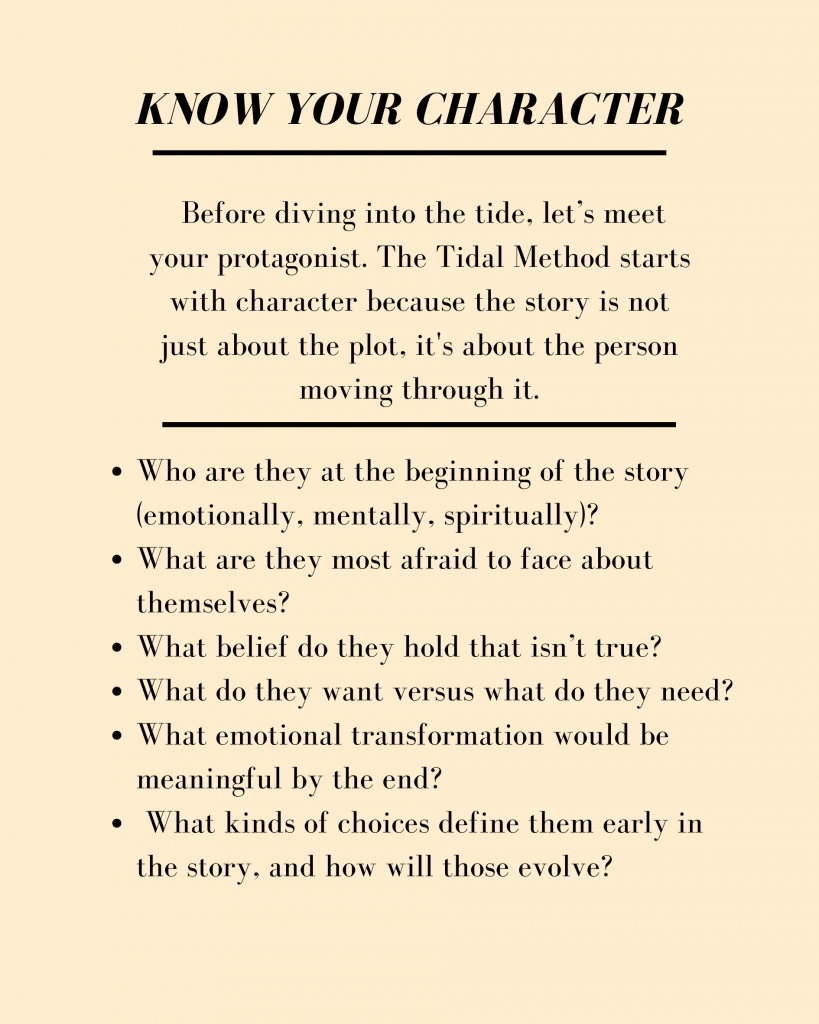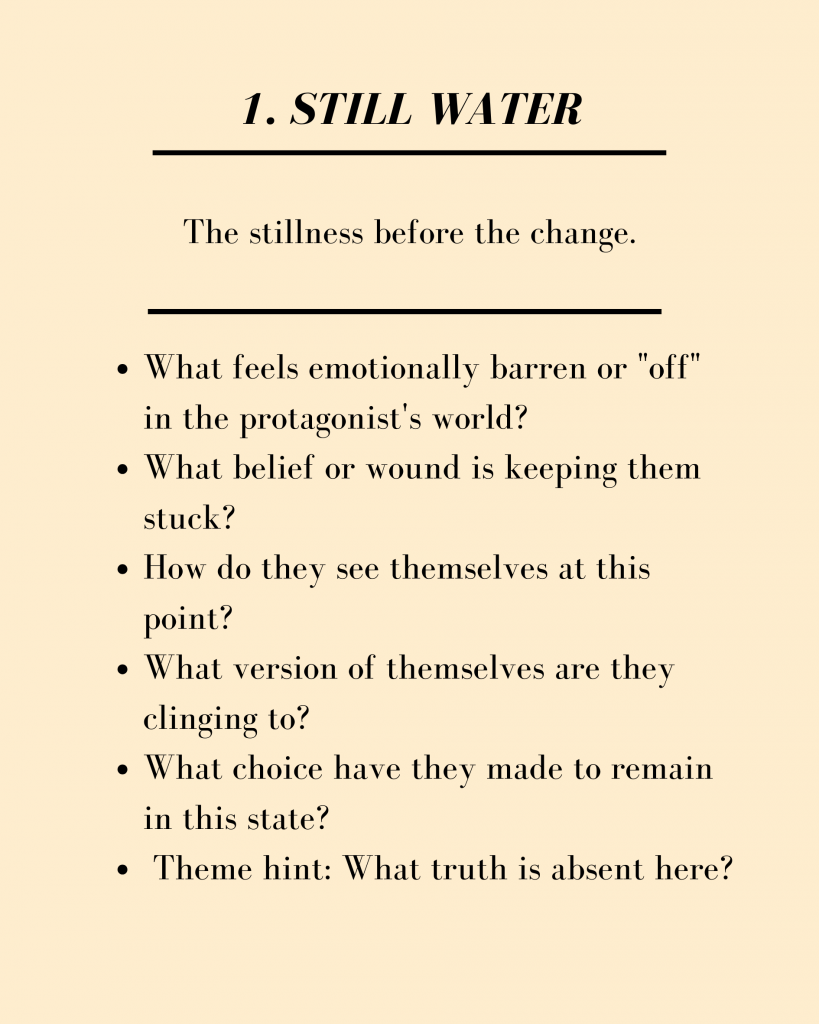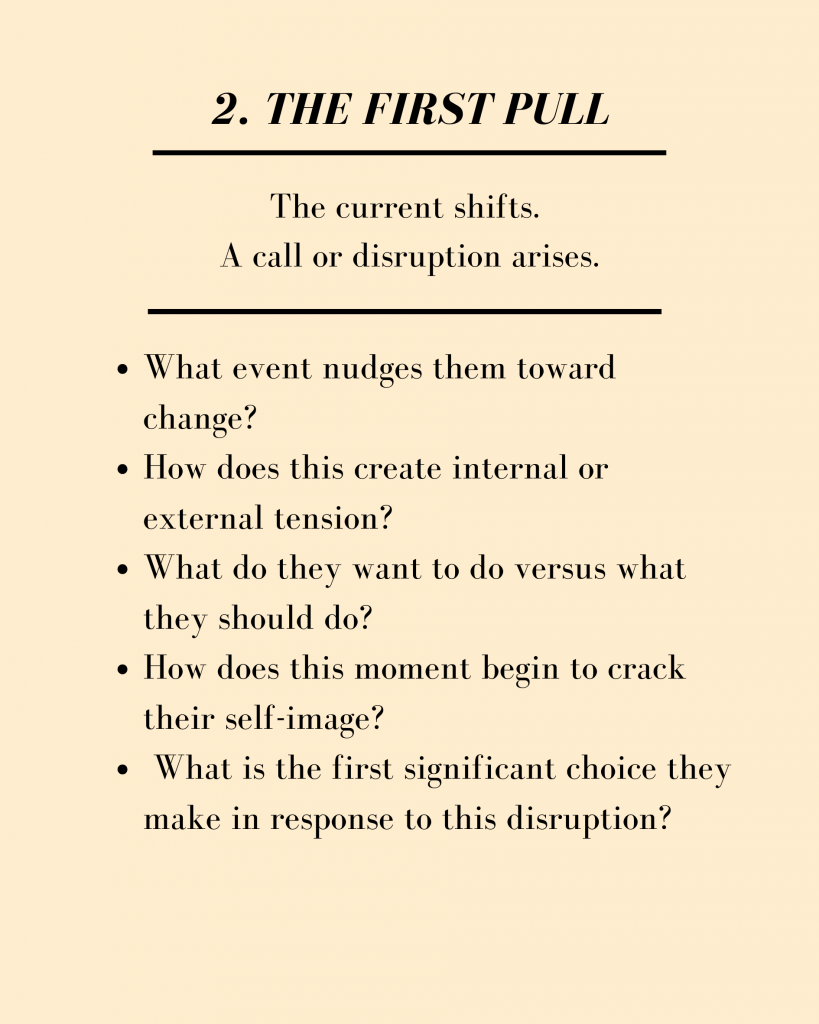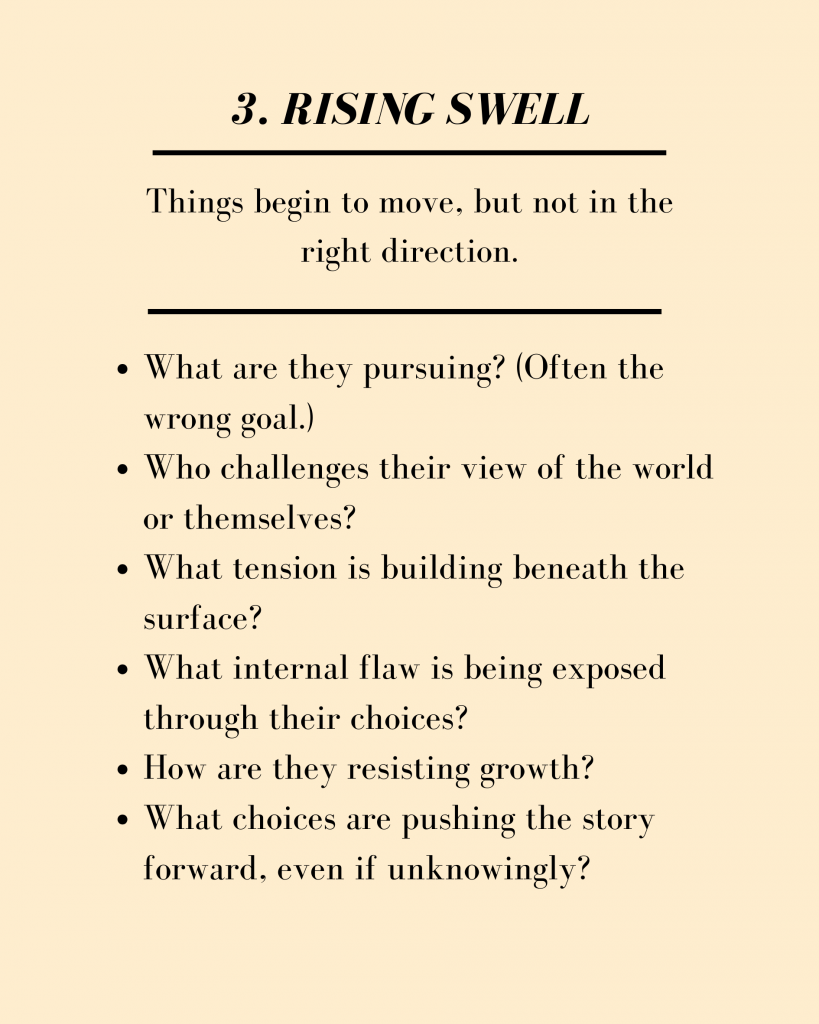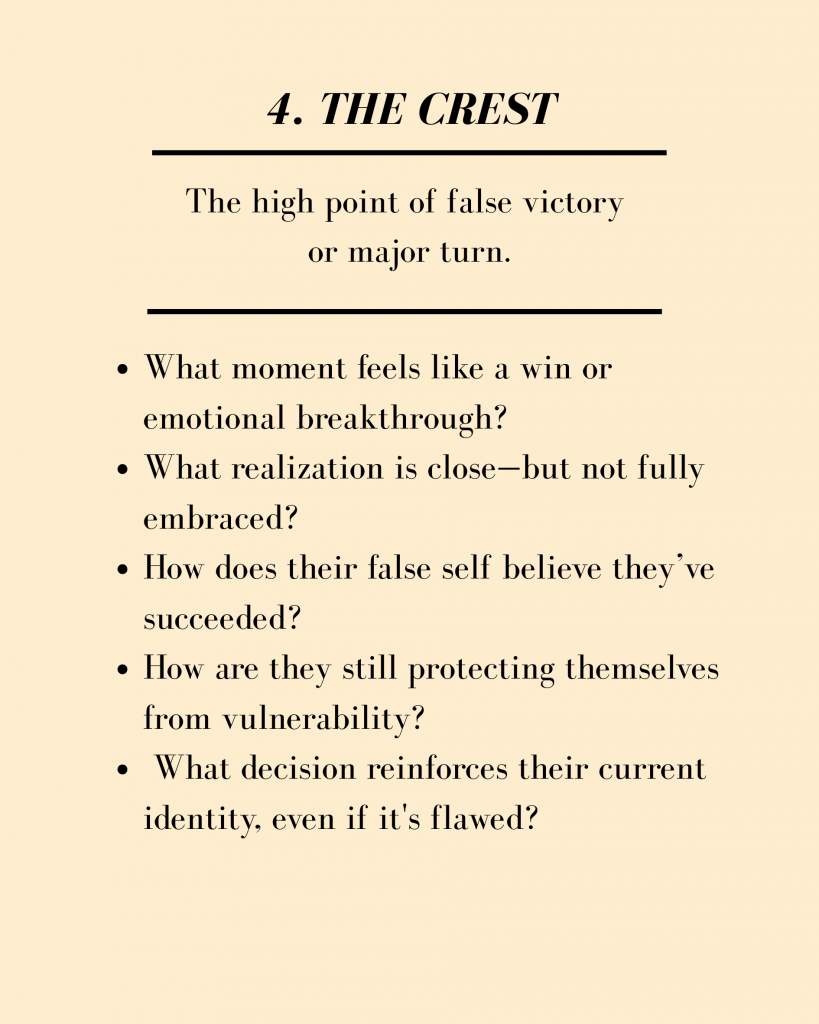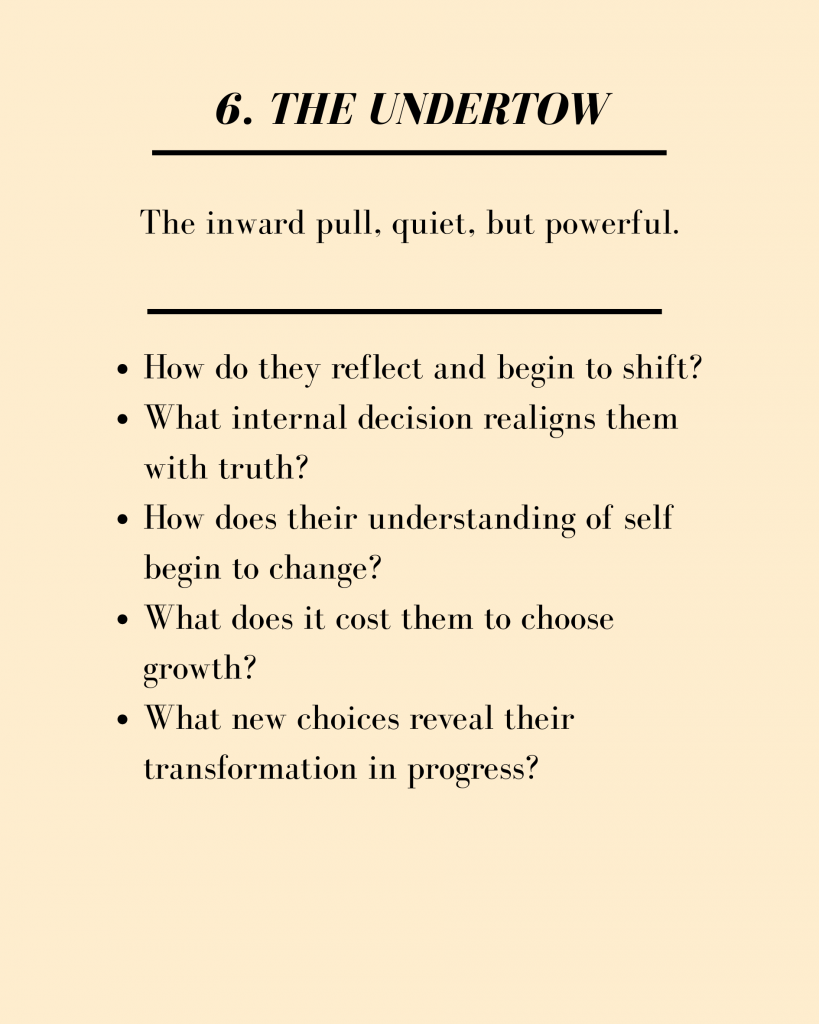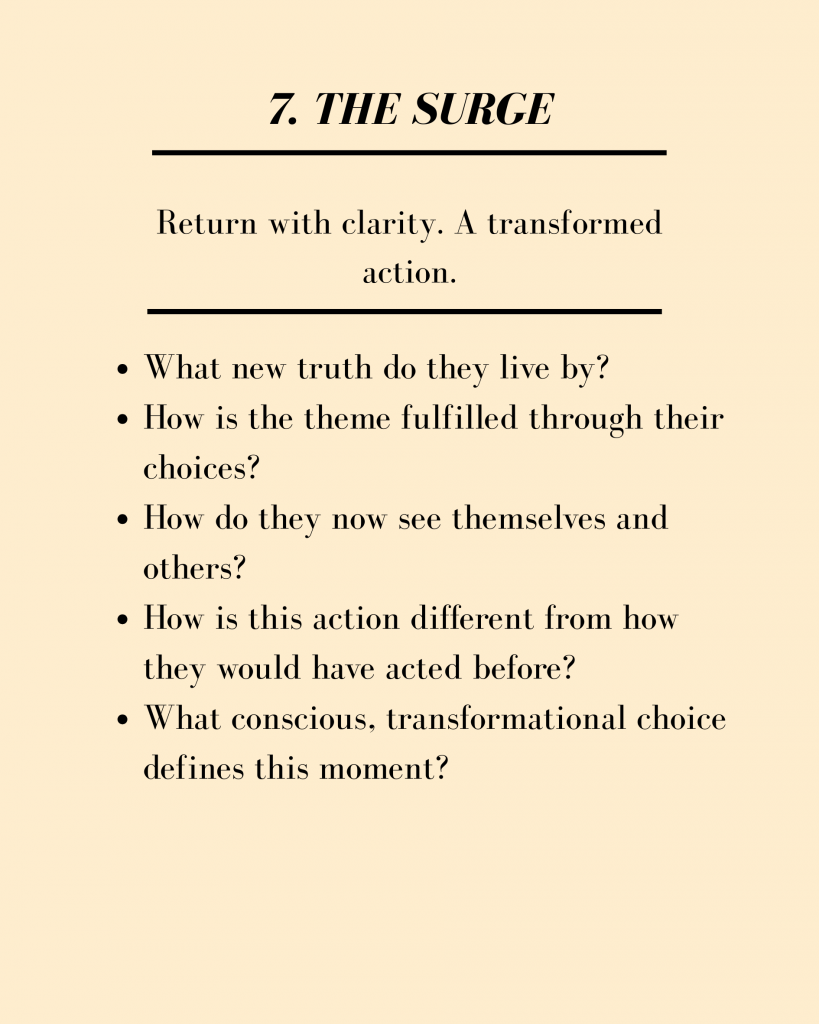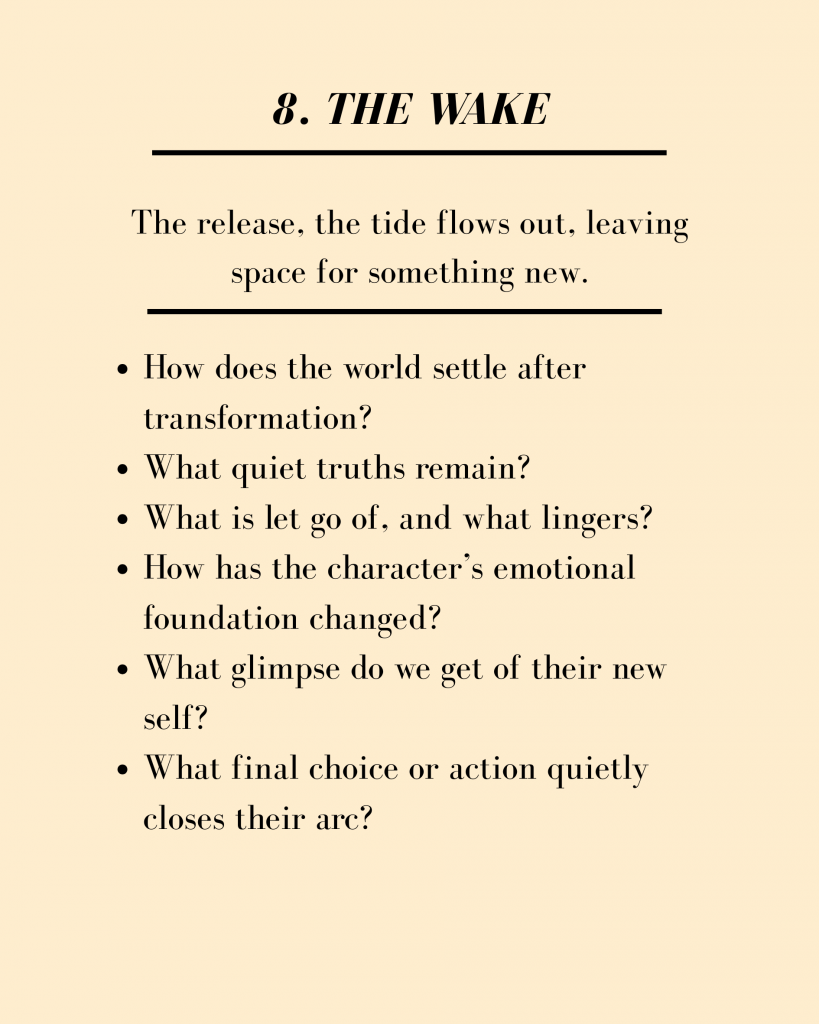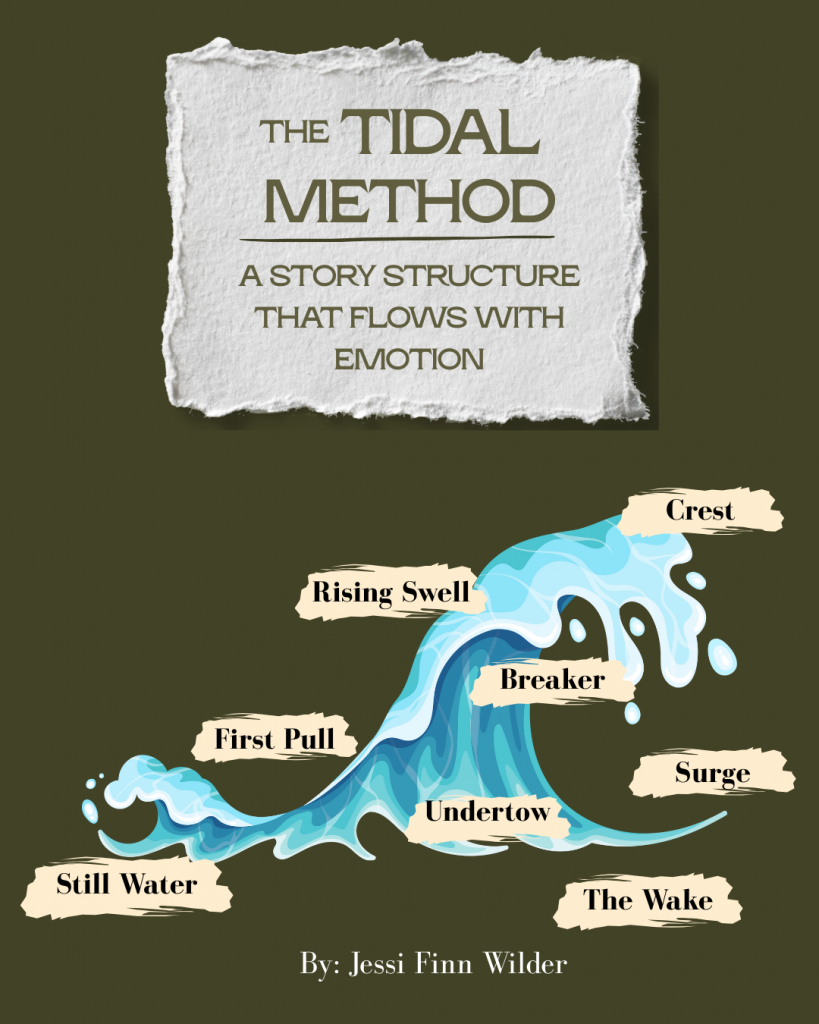Over time, I realized I needed a structure that focused less on hitting exact beats and more on following the emotional truth of a story. I didn’t want it to feel like I was filling in blanks or checking boxes. I wanted it to feel like movement. Like something alive.
That’s where The Tidal Method came from.
It mirrors the natural rhythm of the tide. Not acts or page counts, but rhythm. Moments when a character moves forward and moments when they pull back. The tension. The release. The way emotion builds and breaks. Just like water, stories swell and recede. They rise and fall. And at their core, they move the character closer to something true.
The Tidal Method includes eight phases that every story moves through. Some stories may linger in one phase longer than others. That’s okay. The point isn’t to stick to a formula. The point is to follow the emotional current of your story.
Here are the eight phases:
- Still Water – The quiet before the story begins. Something is missing. The character is stuck or empty. We feel the absence of truth.
- The First Pull – Something shifts. A moment, a disruption, a call. The story starts to move. The character begins to resist or explore.
- Rising Swell – Emotions build. The character is moving, but often in the wrong direction. Tension builds as flaws surface.
- The Crest – A false victory or big emotional moment. Everything seems to reach a peak. But they’re not ready to change.
- The Breaker – The truth crashes down. This is the emotional low point. The old self breaks. Something is lost or revealed.
- The Undertow – Reflection. Quiet transformation begins. The character starts making different choices, even if they’re scared.
- The Surge – The return. They come back stronger, clearer, truer. They act from a place of growth. The theme is lived, not just said.
- The Wake – The final release. The emotional water pulls back, leaving behind something new. The story settles with meaning.
It’s emotional first. You won’t find act numbers or page targets. You’ll find questions. What is your character resisting? What lie are they believing? What truth are they starting to live by? The Tidal Method invites you to think about change the way nature does, gradually, powerfully, and honestly.
I created a free worksheet you can use to explore these phases in your story. You’ll track the emotional temperature of your character and align your plot to their internal transformation. Whether you’re outlining a new project or revising a messy draft, this method gives you a fresh lens to view your story.
This isn’t about hitting beats. It’s about hitting the emotional core.
Let your story rise and fall with purpose. Let it flow. Let it breathe.
-Jessi Finn Wilder
